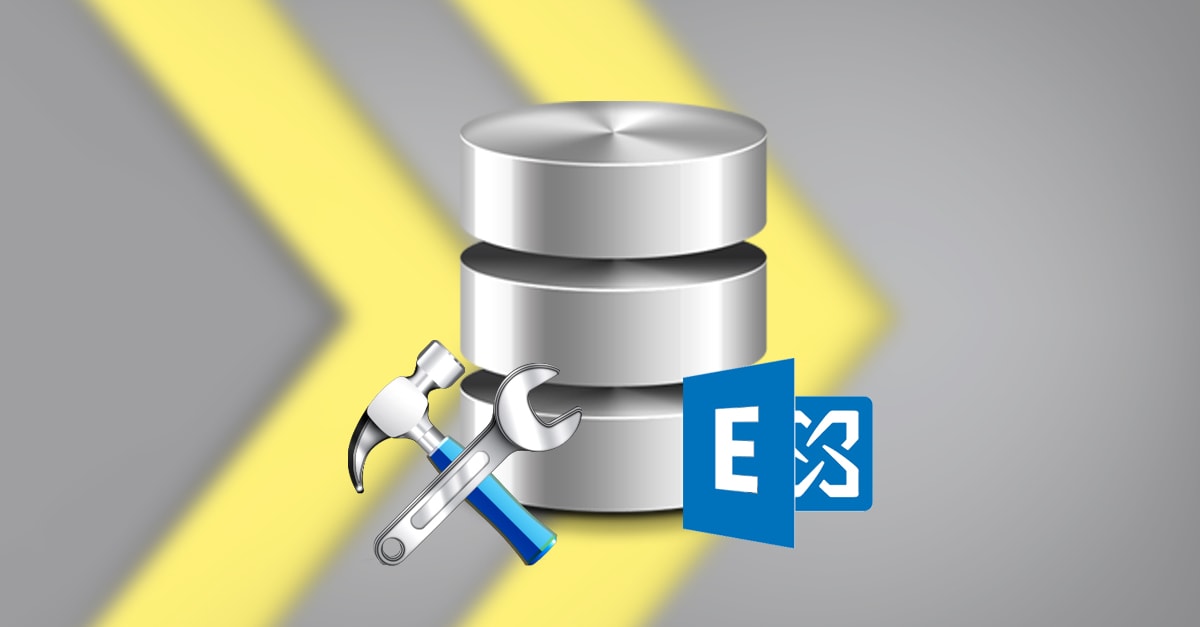
Repair Exchange database 2013 with Eseutil
Nobody wants to get stuck in any terrific situation that’s why the admin always looks after on the Exchange Server activities. Sometimes, despite doing these activities admin have to face major problem and got stuck in these terrific situations, such as disk system where the Exchange databases dwelled when it goes insane and damage the database. Well, everyone thinks that they will restore or rescue it from the backup and roll forward with the transaction log, data loss nothing, although it consumes a lot of precious time. And this can solve with the option left to the admin and the restoration from Exchange Backup but what a big calamity come when you cannot obtain your exchange database or that’s unstartable or being bad.
Microsoft Exchange server gives two very sophisticated and auxiliary utilities that will assist you to save and recover your database and help you out from the terrific and tremendous situation. Eseutil and Isinteg are two Exchange server utilities available for dealing with this situation. If there is salvageable data in your injured database, they’ll get it back and compile for you.
Remarkably, with the assistance of these two utilities, you will get success in fixing up a database like brand new. I know many of administrators who are being supine and so careless with their backups because they think they can re-count on the repair tools to always save their bacon.
The Eseutil application in Exchange cultivated to mend Exchange corrupted Database and unsupportable database of backup, mounting of the recovered database can done through Isinteg application.
Download a trial version of Shoviv Exchange Recovery Manager to Know How to Repair Exchange 2013 Database.
These applications are buckler or protector for Exchange Administrators as one Exchange application settle the situation of the database and another assist in mounts it back to the previous location.
However, the procedure of repairing with Exchange inbuilt application has some aspects mentioned below:
Before doing anything else, firstly copy the original database and the log file to any safe drive where you can get readily. And get a more copy for into a working directory. Eseutil will improve the file in situation if during the execution file may go wrong or error, whether nobody wants to modified original database files.
You require to have an extra copy of the database file in (*.edb and *.stm) additional the transaction log files (like Exx*.) The residing point of the files is the grant from Exchange system manager, but you’ve to know of the actual location where the current files dwelled.
Suppose, the temp directory for the databases File e:\temp\data and they’re called exhdbh.edb,exhdbh.stm. If they dwelled in the first storage group, transaction logs called as E000.log and E0xxx.log e.t.c. Let’s suppose these copied to e:\temp\logs. You require to improve these with your own paths/ filenames of course.
Examine the state of the database and required log files with
eseutil.exe /mh e:\temp\data\exchdb.edb
The outcome will demonstrate the state of your database: which may be in clean or in a dirty shutdown state. If you find the database in the clean state, so you don’t required it cleaning.
It will also demonstrate which log need e.g. which had not yet been run into the database during the occurrence of dirty shutdown or emergent shutdown. But if you have missing, then you will be losing the emails too. Commonly, this only happens if you missed a log drive and have responded copies of the logs you can use.
“Rescue” the database. This execution replays lost transaction logs into the database file – proceed with:
eseutil.exe /r E00 /d”e:\temp\data\exchdb.edb”
May you get an error that there are outstanding database attachments. This time utilize the /i switch in the command.
eseutil.exe /r E00 /d”e:\temp\data\exchdb.edb” /i
Re-check the state of the database with the command given above. But if you will not get in the clean state and that demonstrate dirty shutdown. You are required to mend the database with:
eseutil /p e:\temp\data\exchdb.edb
Re-examine the state of database one more time and it should demonstrate the state of clean shutdown. After getting the database in the clean shutdown state then this is the point where you should defrag the database with the command below:
eseutil /d e:\temp\data\exchdb.edb
Now after defrag, the file perfect to put back to exchange. So it back to the original location on the Exchange server and don’t mount the files. Before doing the final execution of mounting the files, it is mandatory to examine any remaining errors by using isinteg.exe. This application needs the database to be in the original destination or location on the original Exchange server. This requires multiple executions until it shows totally error free. Then you can mount the files.
When you get perfect and error-free database files then you can remount in exchange.
Do hard recovery:
eseutil /r /a e00 /d “C:\Program Files\Microsoft\Exchange Server\Mailbox\First Storage Group\” /s “C:\Program Files\Microsoft\Exchange Server\Mailbox\First Storage Group”
and then proceed with
eseutil /p “C:\Program Files\Microsoft\Exchange Server\Mailbox\First Storage Group\Mailbox Database.edb”
Where “C:\Program Files\Microsoft\Exchange Server\Mailbox\First Storage Group” and “Mailbox Database.edb” were the names of my database directory and database file systematically.
I wish, this articulation will be prove significant auxiliary to admin. While repairing Exchange Database by utilizing the two Exchange utilities Eseutil and isinteg. In case if the issue still persists, you may opt a third party solution like, Shoviv Exchange Recovery Manager. It has a free trial available and helps to repair exchange database without losing or tampering any content.
- How to Backup and Restore Emails in Webmail? - March 25, 2025
- How to Migrate Outlook to New Computer? - February 15, 2025
- Fix If Outlook Cannot Display the Specific Folder Location - February 1, 2025




